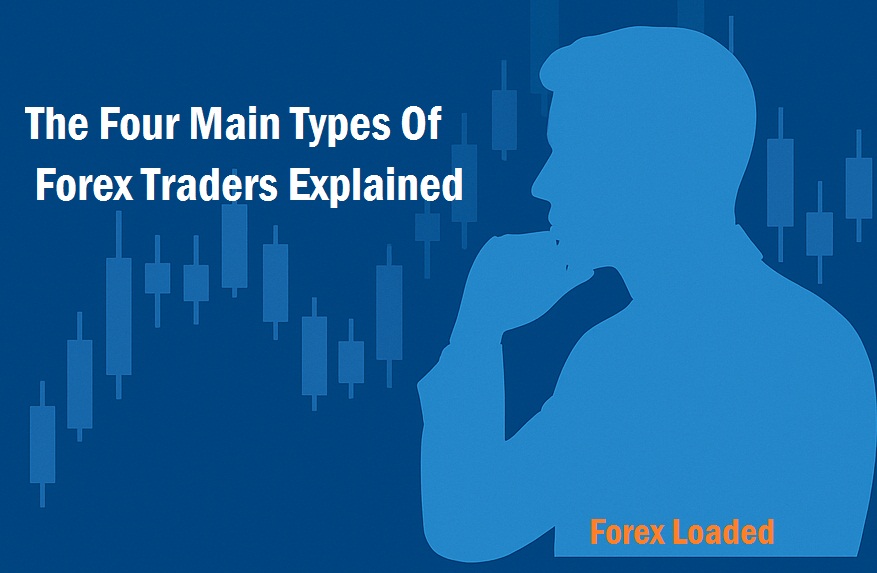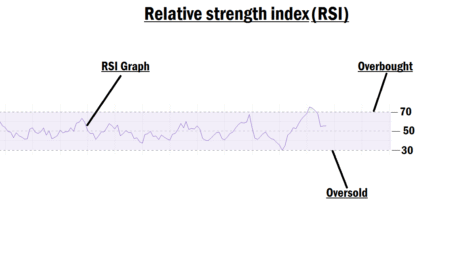Understanding the Four Main Types of Forex Traders
In the world of forex trading, traders are generally categorized into four main types. These trader types differ in terms of strategy, time frames, and the size of capital they use. Understanding each category is crucial in helping you determine which type best suits your trading style and personality.
Forex trading is a personal journey. What works for one trader might not work for another. It’s important to choose a trading style that aligns with your goals, schedule, and risk tolerance. You don’t have to trade a specific time frame just because someone else is profiting from it. Trading is all about self-discovery. Your job is to find what fits you best.
The Four Main Types of Forex Traders
- Scalpers
- Day Traders (Intraday Traders)
- Swing Traders
- Position Traders
Who Is a Scalper in Forex?
A scalper is a retail forex trader who executes multiple trades within a day to capture small price movements (pips). Scalpers typically use lower time frames, such as the 1-minute chart for entries and the 5-minute chart for analysis.
Rather than waiting for large market moves, scalpers aim to accumulate small profits from numerous trades. Some scalpers can place dozens, even hundreds of trades daily, all in pursuit of consistent gains from short bursts of price action.
Do Scalpers Make Money in Forex?
Absolutely! Scalpers with solid strategies and market knowledge can make significant profits. Since they operate on lower time frames where price moves rapidly, they spot more trading opportunities than other trader types.
However, scalping isn’t recommended for beginners. The fast-paced nature and frequent price manipulation on lower time frames can quickly lead to losses if you’re not well-prepared. But for those who’ve mastered their strategy, scalping is one of the fastest ways to grow an account.
Capital Requirement for Scalping
Scalping requires relatively smaller capital, thanks to its tight stop-losses and modest profit targets. You don’t need huge capital to start scalping, but you must be disciplined.
The smaller stop-loss also means lower risk per trade, allowing traders to enter multiple positions. That’s why scalping is often seen as the quickest way to grow a small account if done correctly.
Who Is a Day Trader in Forex?
A day trader, also called an intraday trader, aims to place a few trades within the day and close all positions before the market closes.
Unlike scalpers, day traders focus on quality over quantity. They may place only a few trades daily but look for strong setups. Day traders usually use the 1-hour time frame for analysis and 15-minute, 5-minute, or 1-minute charts for execution.
Do Day Traders Make Money in Forex?
Yes, day traders can make excellent profits, but success still depends on strategy, discipline, and knowledge. Being a day trader doesn’t guarantee profit unless you know what you’re doing.
Day trading is more suitable for beginners, as it involves fewer trades and less stress compared to scalping. However, don’t assume you must trade every day. If there’s no high-quality setup, it’s better to sit on your hands.
Capital Requirement for Day Trading
Day trading requires moderate capital, as it typically uses small stop-losses and reward-to-risk ratios of 3:1 or 6:1.
It’s a good starting point for both beginners and professionals who want a balanced trading style. You don’t need a fortune to day trade. Start small and trade smart.
Who Is a Swing Trader in Forex?
A swing trader holds trades for several days or even a week to catch short- to medium-term trends in the market.
They are more patient and strategic, often waiting for trend reversals or continuation signals. Swing traders use higher time frames like the daily chart for analysis and go down to 1-hour or 30-minute charts for precise entries.
Do Swing Traders Make Money in Forex?
Yes, swing traders can earn a lot, especially since they catch large price swings. With the right lot size and strategy, swing trading can be very profitable.
However, if you lack patience, this style might not be for you. Waiting days or even weeks for a trade setup requires calm nerves and strong discipline.
Capital Requirement for Swing Trading
Swing trading typically requires larger capital due to the wider stop-losses used on higher time frames. It’s best suited for experienced or well-funded traders, as the risks (and rewards) are higher.
This style is not ideal for those seeking daily profits or quick wins.
Who Is a Position Trader in Forex?
A position trader is a long-term trader who holds trades for weeks or months to catch massive moves in the market, often thousands of pips.
They use weekly and monthly charts for analysis and may rely on 4-hour or 1-hour charts for entries. Position traders play the long game, staying in the market for extended periods.
Do Position Traders Make Money in Forex?
Oh yes! Position traders can make huge profits. But it takes high discipline, deep knowledge, and extreme patience.
These traders may wait for weeks or months before entering a position. It’s definitely not for anyone seeking quick profits.
Capital Requirement for Position Trading
Since position trading involves larger stop-losses on higher time frames, it requires substantial capital.
If you’re operating with a small account, position trading might not be ideal, as a single loss could significantly affect your capital. You must be well-funded and mentally prepared to hold trades long-term.
Final Thoughts
Whether you choose to be a scalper, day trader, swing trader, or position trader, each style can be profitable if you understand what you’re doing.
Forex is a journey, not a race. Cut your coat according to your cloth. Don’t force yourself into a trading style that doesn’t match your personality or lifestyle.
These categories exist to help you choose what works best for you.
In our next lesson, we’ll explore: “The Different Types of Candlestick Patterns and Their Meanings in Forex.”
See you there!









